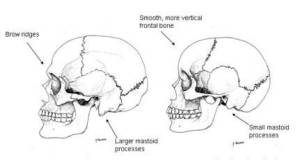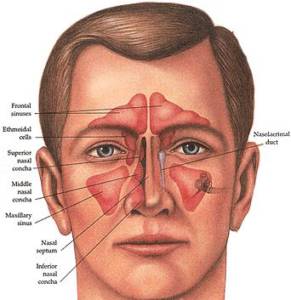OLMEC FOREHEAD RECONSTRUCTION
Our OLMEC forehead reconstruction has a couple of tricks up its sleeve! Let us tell you about it.
Before we at OLMEC plan and begin any kind of forehead reconstruction, we want to have a proper evaluation.
A proper evaluation starts with a CT-scan, that reveals which area of your facial bone tissue can be changed in which way. Dr. Kaushik will discuss your CT-scan at length with you, so you will know what the facts in your case are.
[column size=”2/3″]
The CT-scan allows Dr. Kaushik to evaluate the givens in terms of bone tissues in your face. The CT-scan shows exactly how much hollow space you have in your eyebrow ridges for example and it will help to find the surgical strategy which will promise the best results for your case.
Sometimes grinding down the eyebrow ridges is possible, and then hydroxyapatite (bone cement) will be used to smoothen out the area so it blends well into your forehead, but that is rarely the case.
[/column]
[column size=”1/3″]
[/column]
In most cases, the eyebrow ridges have hollow cavities that want grinding down in such a way, that the area in between the eyebrow ridges – the sinus cavity – will also be affected.
The sinus cavity is part of your nasal breathing system and as such absolutely deserves to be kept intact. We at OLMEC completely refrain from filling up the sinus cavity with bone cement. We know it‘s faster and easier, but we don‘t believe in shutting down a part of your breathing system to make things easier for us. One of the maxims of plastic surgery is to keep or improve the function of the structures worked on – that is why we also want the sinus structure to be kept intact, so it can do its job properly after you had FFS surgery with us.
[column size=”2/3″]
We start by making an incision either at the hairline or at the corona (bicoronal approach). That depends on your hair pattern and current hairline. Then the skin is prepared off, so we can reach your forehead and perform the steps you so desperately want, to get that female face you have been missing for so long.
While shaving the eyebrow ridges, we also shave the orbital rims and the temporal ridges on either side, who are also usually
The orbital rims are located at the upper area of your eyeball sockets, right beneath the eyebrow ridges. This will open up the face and restore that female look you have been missing ever since puberty changed your face. In between the eyebrow ridges the frontal plate of the sinus will be taken off so that there will be a smooth, nice, and even flow of line and shape that will make your face and the upper third of your face female.
[/column]
[column size=”1/3″]
<br>
[/column]
We do this because otherwise, we would damage the sinus and it would be open.
After all the shaving and restructuring got performed the sinus plate will be reattached – but we have a special technique to give it a new bend, so it fits the new forehead shape nicely, because the curve of the forehead is different after shaving, compared to before.
Then the skin of the forehead will be put back into place, and when needed self-dissolving endotines – small fixing devices that will keep the skin in place – will be used to make sure the forehead skin stays where we want it to be, so it can heal nicely.
In case you were having a hairline incision we will use the OLMEC camouflage hair transplant technique to hide the scar of the incision. We will harvest enough hair follicles to cover the incision line, so this hairline scar will be completely invisible after the hair from the transplant grows back, which is usually completed around 10-12 months after surgery.
In case you had a coronal incision approach, your scar will be well hidden, because the incision line is made from ear to ear passing the corona (center) of your head, and once the skin is put back into place all present hair will cover the incision.















